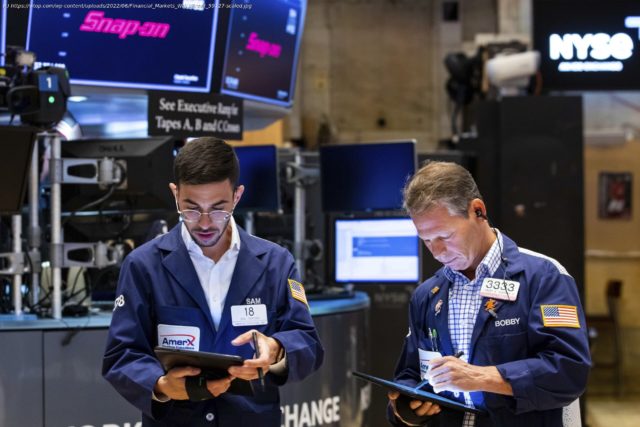NEW YORK (AP) — Wall Street looks like it will open the week with more losses, with the S&P 500 falling to a level that market observers consider to be a so…
— Wall Street looks like it will open the week with more losses, with the S&P 500 falling to a level that market observers consider to be a so-called bear market. Rising interest rates, high inflation, the war in Ukraine and a slowdown in China’s economy have led investors to reconsider what they’re willing to pay for a wide range of stocks, from high-flying tech companies to traditional automakers. Big swings have become commonplace and Monday appears to be no exception. The last bear market happened just two years ago, but this would still be a first for those investors that got their start trading on their phones during the pandemic. Thanks in large part to extraordinary actions by the Federal Reserve, stocks have for years seemed to go largely in only one direction: up. The “buy the dip” rallying cry after every market slide has grown more faint after stinging losses and severe plunges in risky assets like cryptocurrencies. Bitcoin tumbled another 12% and fell below $24,000 early Monday. The price for Bitcoin neared $68,000 late last year. Here are some common questions asked about bear markets
___
WHY IS IT CALLED A BEAR MARKET? A bear market is a term used by Wall Street when an index like the S&P 500, the Dow Jones Industrial Average, or even an individual stock, has fallen 20% or more from a recent high for a sustained period of time. Why use a bear to represent a market slump? Bears hibernate, so bears represent a market that’s retreating, said Sam Stovall, chief investment strategist at CFRA. In contrast, Wall Street’s nickname for a surging stock market is a bull market, because bulls charge, Stovall said. Futures for the S&P 500, Wall Street’s main barometer of health, slid more than 2% before the opening bell Monday to 3,810. That’s about 20.5% below the high set on Jan. 3. The Nasdaq is already in a bear market, down 29.37% from its peak of 16,057.44 on Nov. 19. The Dow Jones Industrial Average is more than 15% below its most-recent peak. The most recent bear market for the S&P 500 ran from February 19, 2020 through March 23, 2020. The index fell 34% in that one-month period. It’s the shortest bear market ever.






